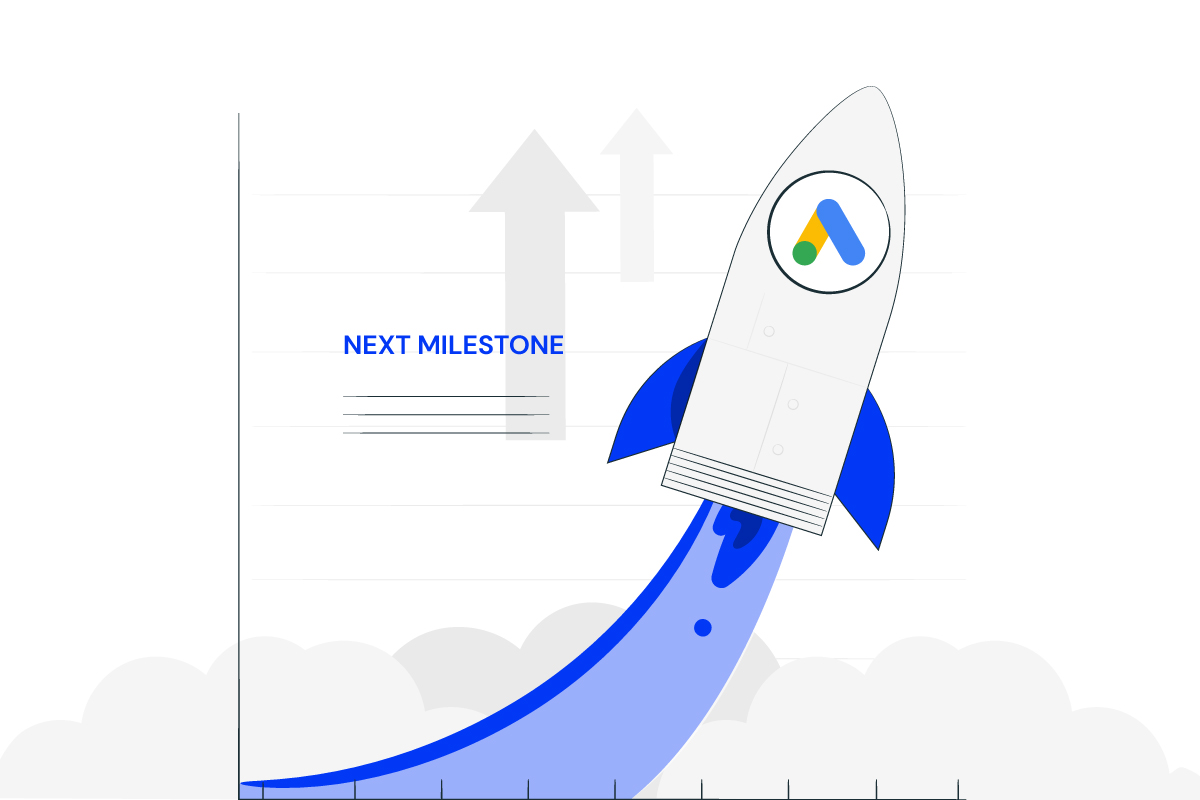
Your ultimate guide to google ads in 2024
What are Google Ads?

Google Ads is a Google’s online advertising platform. With Google Ads, you can create online ads to reach people exactly when they’re interested in the products and services that you offer.
- Google Ads is a product that you can use to promote your business, help sell products or services, raise awareness, and increase traffic to your website.
- Google Ads accounts are managed online, so you can create and change your ad campaign at any time, including your ad text, settings, and budget.
- There’s no minimum spending commitment, and you set and control your own budget. You choose where your ad appears, set a budget that’s comfortable for you, and easily measure the impact of your ad.
Why advertise on Google?
With more than 5 billion searches performed each day, Google is the most popular search engine. Furthermore, the Google Ads platform has been in existence for about 20 years, providing it some exposure and credibility in sponsored advertising.
People from all over the globe use Google as a resource to ask questions that are answered by a combination of paid advertisement and organic results.
Do you need another reason? Your rivals are implementing Google Ads (and they might even be bidding on your branded terms).
Because so many businesses is using Google Ads to market their brands, even if you are ranking organically for a certain search keyword, your results will be pushed down the page under those of your rivals.
What are the best practices in Google Ads?
Don’t give up if you’ve tried advertising on Google with no luck. Your Google Ads may not be operating as they should for a variety of reasons. However, let’s go through some common Google Ads recommended practices:
- Avoid broad keywords terms
- Don’t run Irrelevant ads
- Improve your Ads quality score (QS)
- Optimise your landing pages for more conversions
What are the Google Ads terms you should know?
- AdRank
- Bidding
- Campaign Type
- Click-Through Rate
- Conversion Rate
- Display Network
- Ad Extensions
- Keywords
- PPC
- Quality Score
These common terms will help you set up, manage, and optimize your Google Ads. Some of these are specific to Google Ads, while others are generally related to PPC. Either way, you’ll need to know these to run an effective ad campaign.
How does google ads work?

Google Ads displays your ad to potential leads or customers who are interested in your product or service. Advertisers bid on search terms, or keywords, and the winners of that bid are placed at the top of search results pages, on YouTube videos, or on relevant websites, depending on the type of ad campaign selected.
Your capacity to develop successful and high-performing Google Ads is impacted by a variety of things. Let’s go over them now, along with some Google Ads examples.
- AdRank and Quality Score
- Location
- Keywords
- Match Types
- Headline and Description
- Ad extensions
Stay connected to our newsletter
"*" indicates required fields
What is Google Ads Retargeting?

Remarketing, also referred to as retargeting, in Google Ads, is how users can track and target people who have already visited their website (or even a specific web page).
However, tracking cookies have to be installed on the website prior to being able to use this GOogle Ads technique. Remarketing is one of the most effective ways of delivering banners online. This technique can also be used to deploy new series of banners for new products, services or campaigns since the “audience” of visitors on the website can remain for over a period of 180 days. A visitor usually takes a few sessions before becoming a lead or a paying customer. Remarketing (or retargeting) allows for the brand, or promotional campaigns, to be delivered multiple times to the same prospect.
What are the types of Google Ads campaigns?

You can choose from 5 different types campaigns on Google Ads which are:
- Search Ad Campaigns
- Responsive Search Ads
- Display Ad Campaigns
- Video Ad Campaigns
- App Ad Campaigns
- Shopping Ad Campaigns
How to use Google ads?
Here’s a step-by-step guide for setting up your first campaign on Google Ads:
- Set up your Google Ads account.
- Choose your business name and website.
- Select your advertising goal.
- Craft your ad.
- Add keyword themes.
- Set your ad location.
- Set your budget.
- Confirm payment.
And this is how you create your Google Ads account.
As you can see, setting up your paid campaigns on Google is relatively easy (and quick), mostly because the platform takes you through the setup and provides helpful hints along the way.
What is Google Ads Bidding Strategies?
Once your ad campaigns are set up and tracking is established, it’s time to begin bidding. Remember that your bid strategy will determine where you may rank in Google Ads. Even though your bid amount will depend on your budget and objectives, there are a few techniques and bid parameters you should be aware of when starting your paid campaign.
Automated vs. Manual Bidding
You have two options when it comes to bidding on your keywords — automated and manual. Here’s how they work:
- Automated Bidding puts Google in the driver’s seat and allows the platform to adjust your bid based on your competitors. You can still set a maximum budget, and Google will work within a range to give you the best chance at winning the bid within those constraints.
- Manual Bidding lets you set the bid amounts for your ad groups and keywords, giving you the chance to reduce spending on low-performing ads.
Bidding on Branded Search Terms
Branded terms are those with your company or unique product name in them, like “HubSpot CRM.” There is much debate on whether to bid on your branded terms or not. On one side of the debate, bidding on terms that will likely yield organic results could be seen as a waste of money.
On the other side, bidding on these terms gives you domain over these search results pages and helps you convert prospects that are further along the flywheel. For instance, if I’ve been researching live chat tools and am heavily considering HubSpot’s Live Chat, then a simple search for “HubSpot live chat software” will yield precisely the result I’m looking for without the effort of scrolling.
The other argument in favor of bidding on your branded terms is that competitors may bid on them if you don’t, thereby taking up valuable real estate that should belong to you.
Cost Per Acquisition (CPA)
The alternative is to set a CPA and only pay when a user converts into a client if the thought of spending money to convert prospects into leads makes you uncomfortable. Even while this bidding technique could be more expensive, you can rest easy knowing that you only pay when you acquire a paying customer. This tactic makes tracking and analyzing your advertising expenditure simple.
Additional Resources to Optimize Your Google Ads
Your ad copy and headline is not the only component that will make your paid campaign successful. Getting a user to click is only the beginning. They should arrive on a landing page that’s optimized for conversion and then be taken to a Thank You page that tells them what to do next.
If you want your Google Ads to generate quality leads and customers, Make sure you set up your Google Ads campaign and look over these additional resources and utilize them as guides.
- Landing Page Best Practices will teach you how to set up a landing page that’s prime for conversions so you don’t waste those precious clicks.
- Optimized “Thank You” Pages shows you what to do with your new lead post-conversion, how to keep them on your site, and ways to maintain their attention.
- Tips for Mobile Google Ads teaches you the key differences between desktop and mobile ads and how to optimize both.
- Optimizing Google Ads Costs will show you how we, at HubSpot, maximize our Google Ads spend to get the best ROI.
- Quality Google Ads Examples That Convert shares examples of Google advertising campaigns that got it right.
Stay connected to our newsletter
"*" indicates required fields
Additional Google Ads Tips that you should know
Here are a few quick recommendations or best practices to keep in mind as you create successful campaigns now because you understand how to use and set up a Google Ad campaign.
Although we’ve talked about these extensively in this article, it’s impossible to overestimate how important they are. Use this as a checklist where you can use repeatedly.
1. Have a clear goal.
It’s vital to define your objectives before you create your ad, instead of creating an ad first and then tweaking it to fit your objectives. Sit down with your marketing team to prepare an advertising plan and create SMART goals for your Google Ads campaigns.
2. Create a relevant landing page.
When prompted to add your URL when creating your ad, ensure that the URL you provide leads to a relevant landing page. If your ad is interesting enough to get clicked, you could undo all that great work if it directs them to a poor landing page.
Therefore, optimize your landing pages so that your ad will help convert a curious visitor into a paying customer. Check out our landing page guide so you know exactly how to create great landing pages.
3. Use the right keywords.
Keywords are super important, so it’s only right that you choose the best ones for your ad.
Long-tail keywords are some of the best types of keywords because they are very specific and can target one business.
For example, say you run a cat clinic. A generic keyword like ‘cat clinic’ won’t target people in your area, but something like ‘cat clinic in belvedere’ is more likely to attract the right audience.
4. Automate the process
You can maximize conversions by optimizing the bidding process. Tools like Smart Bidding can increase or reduce bids for you, depending on the chance of success.
Therefore, you’ll spend money only when there’s a higher chance of success.
5. Use Ad Extensions
Extensions can take your ad performance up a notch. These extensions allow you to specify your locations, services, goods, or sales promotions.
For example, you could include a telephone number in your ad so people can call you to inquire about your services right away.
6. Use negative keywords
Google Ads allows you to include negative keywords. Using these keywords indicates what your product or service is not, thus preventing you from showing up in irrelevant SERPs.
Using the cat clinic example, you might only cater to cats and not dogs or other pets. In this case, you can exclude terms like ‘dogs’ and other qualifiers.
7. Measure and improve upon your strategy
When you integrate your ads with Google Analytics, you can track important metrics like page popularity, the keywords that drive the most traffic, and more.
Collecting and analyzing these and other metrics will help you improve the quality of your ads, boost your conversions, and increase revenue over time.
Start Your Google Ads Campaign now!

Only a few campaigns that require a little bit more work and time; there are absolutely no reason Google Ads campaigns that doesn’t work. You have everything you need to construct an effective Google Ad campaign that generates clicks and leads by using the above strategy and information.
Share this article
Latest articles
April 10, 2024
April 10, 2024
April 10, 2024
April 10, 2024




